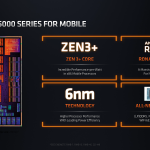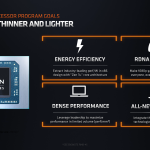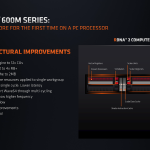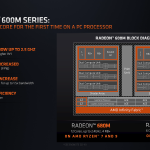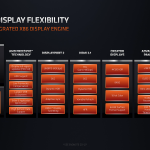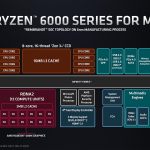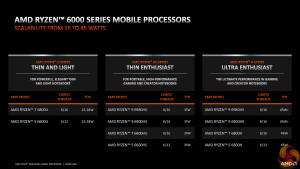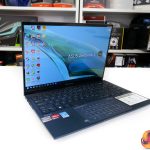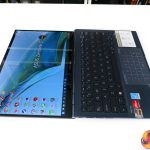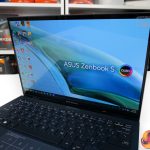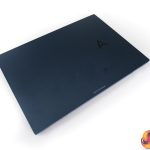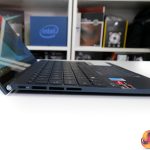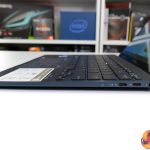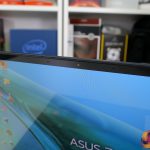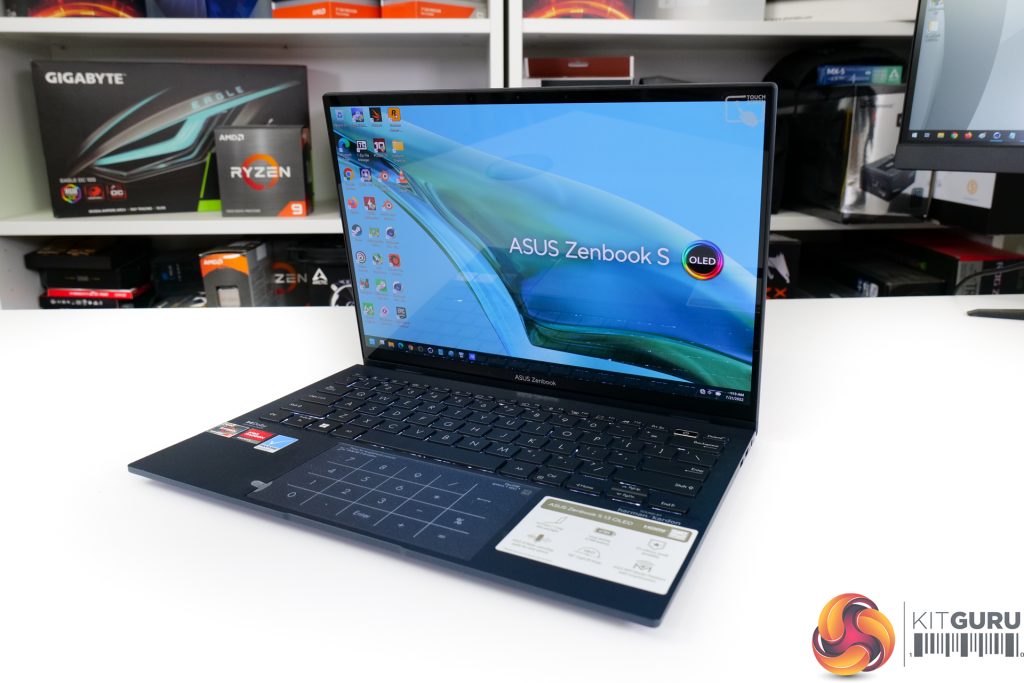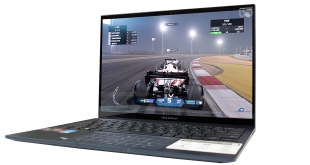
AMD’s new Ryzen 6000 Mobile processors are focussed heavily on strong computational and graphics performance at low power levels. That combination makes the U-series chips right at home inside 15-28W-class, sub-15mm, 1kg ultraportable style laptop chassis; and that’s exactly what we have at hand to examine the performance of AMD’s new 8-core Zen3+ processor – the ASUS ZenBook S 13 OLED.
We have already examined Zen 3+ Mobile in its 35W-class Ryzen 9 6900HS form with the ASUS ROG Zephyrus G14 and that was a glowing success with the chip proving to be absolutely superb. So, let’s see if that outstanding performance and performance-per-Watt translates well for the Ryzen 7 6800U in a market where such metrics are absolutely critical.
Timestamps
00:00 Start
01:10 Introduction to the 6800U
02:49 ASUS ZenBook S 13 OLED
04:50 Test setup and comparisons
06:25 Temps, clocks and overall behaviour
07:45 CPU/System benchmarks
10:27 Gaming benchmarks
13:22 Media consumption
14:54 Noise levels
15:34 SSD and battery
16:35 Closing thoughts
In this review, we are going to primarily focus on the brand-new hardware that ASUS deploys in the ZenBook S 13 OLED UM5302TA laptop. Notably, that is the AMD Ryzen 7 6800U processor and its accompanying LPDDR5 memory. Make sure you check out our previous Ryzen 6000 review videos and written article if you want more details on the SoC features.
The Zen 3+ Ryzen 7 6800U is an 8-core, 16-thread processor with 2.7GHz base frequency and up to 4.7GHz boost. 20MB of total cache is supplied and the chip is built on TSMC’s 6nm process node to provide 13.1 billion transistors.
The platform side of things has been improved significantly versus previous generations, too. You now get support for LP or standard DDR5, PCIe Gen 4 connectivity is deployed throughout, and there’s overarching USB4 support too, which is fundamentally critical for ultraportable laptops such as this – particularly with the interoperability with the well-established Thunderbolt ecosystem.
The new Radeon 680M integrated GPU is built around RDNA2 and features 12 Compute Units clocked up to 2.2GHz. Those specs make us intrigued by the possibilities of some light gaming duties.
But the real area where the GPU shines is for its media and general usage performance. Ryzen 6000 offers up AMD’s improved support for H264, H265, and AV1 – all at high resolutions and often high refresh rates. Plus, the new display controllers could be ideal for outputting to high-resolution displays with HDR and other technologies.
These Ryzen 7 6800U specs are clearly very similar to the higher-end 8-core HS and HX series processors in AMD’ Ryzen 6000 Mobile line-up. Despite similar specs, those HS and HX processors will be notably faster due to their greater power budgets.
For market competition, AMD is realistically targeting Intel’s up-to-28W parts here. Historically, that would be Intel 11th Gen Tiger Lake, but now it is Intel 12th Gen Alder Lake in the form of parts such as the Core i7-1260P.
With the Ryzen 7 6800U deployed inside the ASUS Zenbook S 13 OLED laptop that we have been sent for testing, there’s a strong amount of horsepower squeezed into this 13.3-inch class, 14.9 mm-thick magnesium-aluminium chassis that weighs around 1 kilogram.
You get 16GB of LPDDR5 6400MHz memory alongside a 1TB PCIe Gen 4 NVMe SSD. 16GB is a bit slim by modern standards, even for an ultraportable laptop, but it is high speed!
The 13.3-inch touchscreen OLED 16:10 display runs at 2880×1800 resolution and 60Hz. This is a glorious screen with a 1-million-to-1 contrast ratio, HDR support, 100% DCI-P3, 550-nits peak brightness, and Pantone validation. You even get slim bezels from the NanoEdge display, which also supports stylus usage thanks to its swift response time.
MediaTek/AMD WiFi 6E is provided alongside a 3.5mm audio jack and triple USB 3.2 Gen 2 Type-C connections that all support DisplayPort and power delivery. Plus, AMD’s SoC design means that USB4 support is a BIOS update away.
Charging of the 67 Whr battery is done via the included 65W USB-C adapter. ASUS also has the cool feature where even lower-spec USB-C chargers can deliver power to the laptop, as tested with a 25W Samsung phone fast charging brick.
And peripherals on the laptop are good for my personal preference; the backlit keyboard is functionally solid, I like ASUS’ trackpad that doubles up as a number pad and calculator quick launch, there’s a good enough webcam, and the fingerprint sensor is a useful security feature.
Pricing for the ASUS Zenbook S 13 OLED in its Ryzen 7 6800U form is meant to be $1449 USD according to the documentation we received from AMD. This translates into around £1300 in the UK. But as is typical for the current world we live in; availability seems to be questionable right now.
 KitGuru KitGuru.net – Tech News | Hardware News | Hardware Reviews | IOS | Mobile | Gaming | Graphics Cards
KitGuru KitGuru.net – Tech News | Hardware News | Hardware Reviews | IOS | Mobile | Gaming | Graphics Cards


